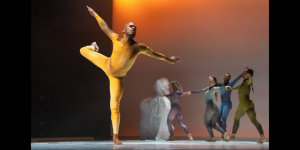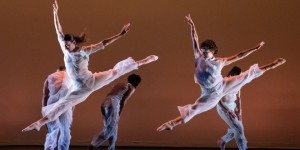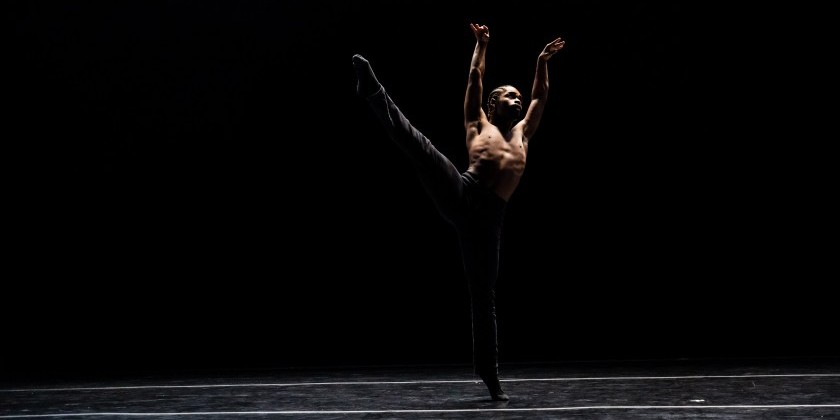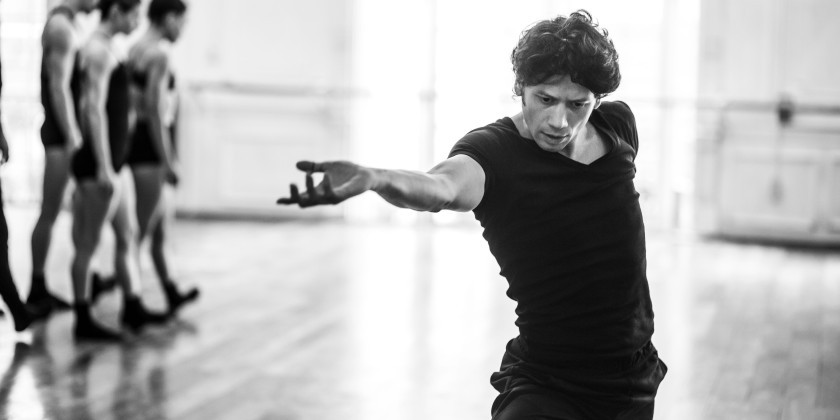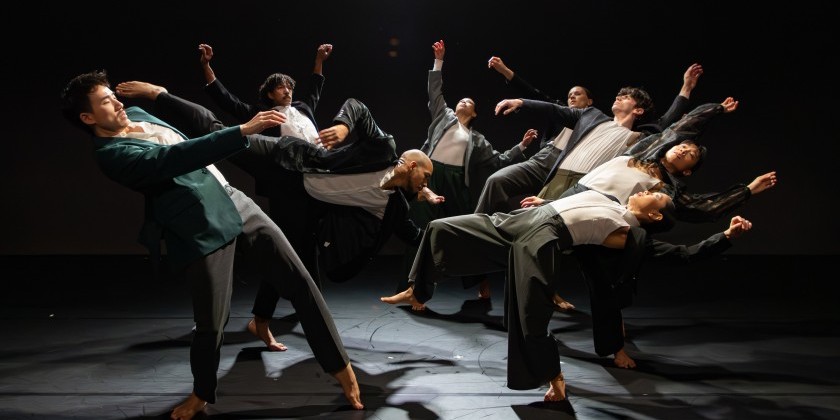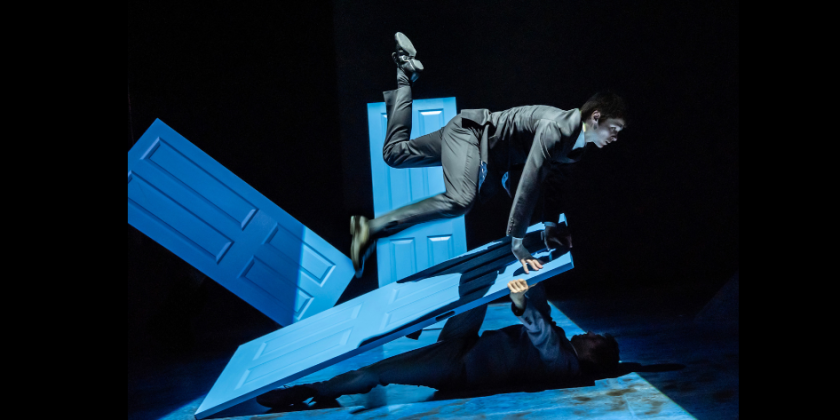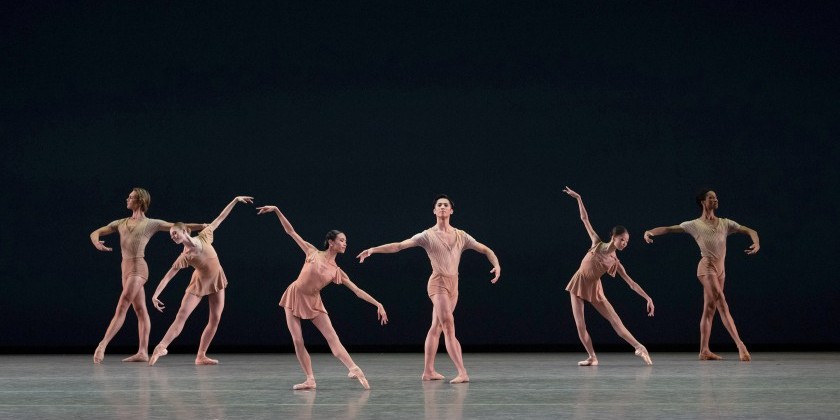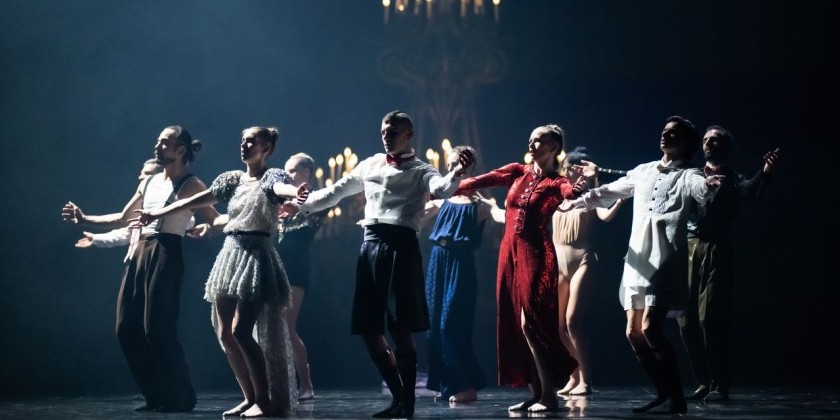IMPRESSIONS: Ayodele Casel’s "The Remix" at The Joyce Theater
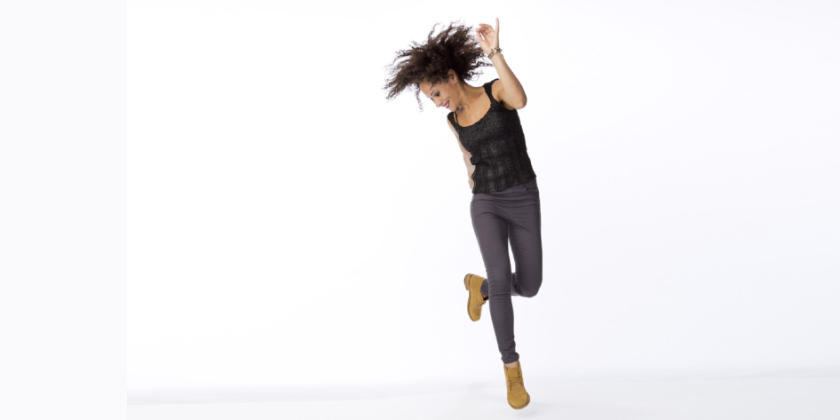
Choreographer: Ayodele Casel
Creators: Ayodele Casel and Torya Beard
Director: Torya Beard
Guest Choreographers: Quynn L. Johnson, Ryan K. Johnson, Naomi Funaki & Caleb Teicher
Original Music/Musicians: Keisel Jiménez (Percussion), Raúl Reyes (Bass)
Original Composition/Electronic Music: Jared Alexander, Liberty Styles
Costume Designers: Camilla Dely & Amanda Roberge
Lighting/Video Designer: Julie Ballard
Scenic Designer: Tatiana Kahvegian
Performers: Ayodele Casel, Jared Alexander, SuB a.k.a. Elijah Bullard, Naomi Funaki, Tony McPherson, Izaiah Montaque Harris, Keisel Jiménez, Quynn L. Johnson, Ryan K. Johnson, John Manzari, Raúl Reyes, Funmi Sofola, Liberty Styles
May 28 - June 8, 2025
The greatest of the (many!) pleasures afforded by “Ayodele Casel: The Remix” lies in the 80-minute, tap-dance show’s refreshingly non-interactive nature. Co-created by the just-turned-50 Ayodele Casel — a pre-eminent tap artist of her generation — and her frequent collaborator, director Torya Beard, the absorbing production is staged with an artful fluidity that leaves no space for audience applause. I saw the show on opening night, and there was none of that “whooping it up” — the phony, social media-encouraged, noise-making that has become fashionable for performance-event fans to deliver “on cue” whenever they sense a break in onstage action. Here, a cast of riveting dancers and musicians present their show — seamless and complete unto itself — and, blissfully undistracted, we are free to be totally entranced by their performances.
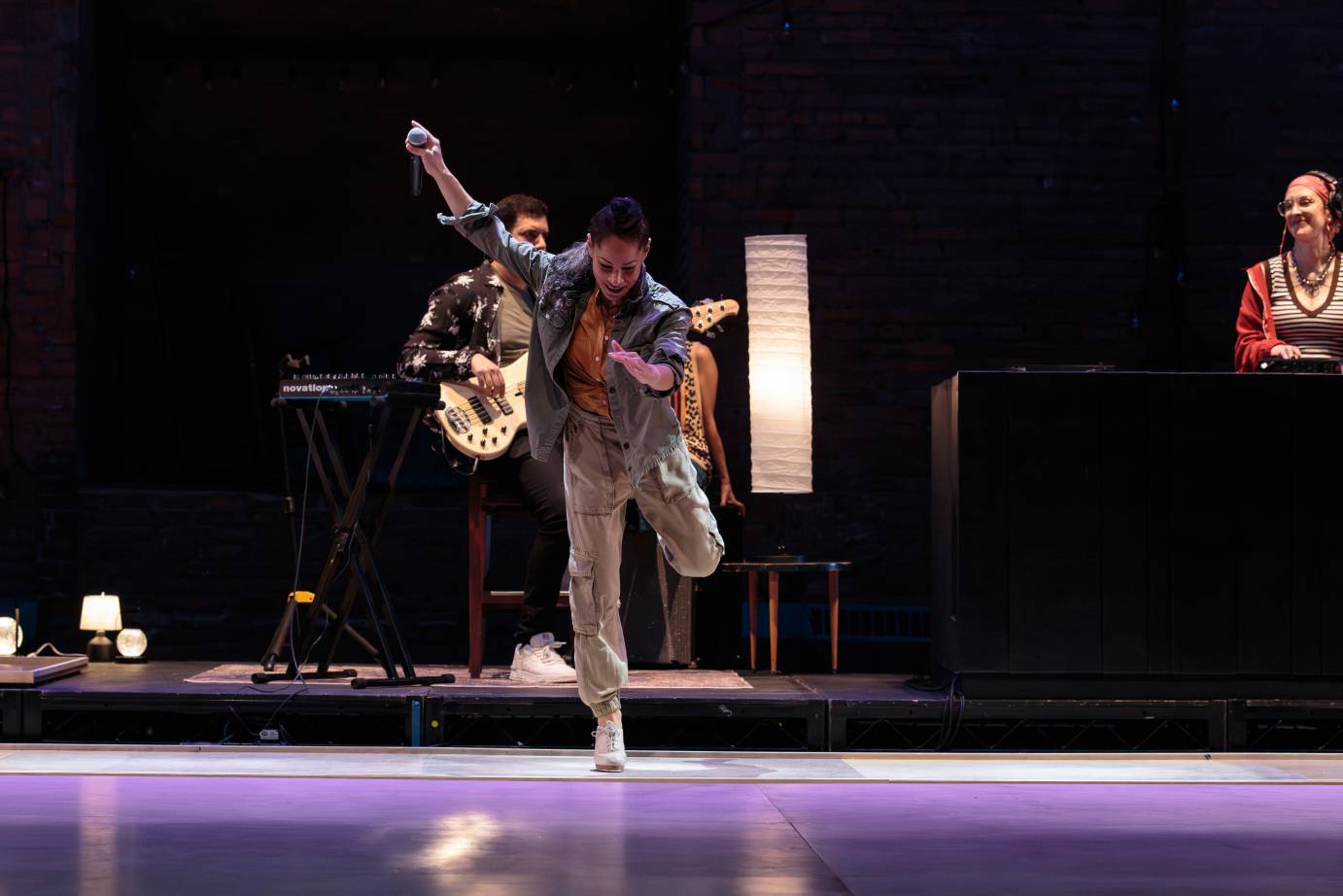
Amazingly, while focusing specifically on tracing Casel’s personal evolution as a tap dancer-choreographer, The Remix illustrates all of the signature characteristics of tap dance in general — not pedantically, nor one at a time with list-like, encyclopedic thoroughness, but integrated along Casel’s journey. One never gets the sense this was the creators’ intention. Yet, embedded within the sophisticated show’s 13 dance and spoken-word scenes — choreographed mostly by Casel (as re-imaginings of works she made over the last 20 years) — I counted at least eight distinguishing attributes that, taken together, can be seen to define the rich and important art of tap dance.
From the get-go, we learn that tap is as much a musical form as it is a dance form. Not only does scenic designer Tatiana Kahvegian give over the entire upstage playing area to a musicians’ platform equal in size to the tappers’ rectangular dance floor, but following a pre-show DJ set by Liberty Styles — who also does duties as a dancer throughout the evening — Casel launches the show proper with a poem about her beginnings as a performer. Her rapping words, interspersed with tapping phrases, beautifully blur the lines between spoken, physical, and musical lexicons. We come to understand it all as the language of rhythm.
Casel’s poem explains her formative inspirations — the popular music and hip-hop culture of the 1990s, and the envelope-pushing tap-dance scene it spawned. As a dancer, she wanted to be part of what she was “hearing on the radio,” but in her own way, as “another free-styler on the album.” Though Casel gratifyingly discovered “you could tap dance to anything you wanted,” as she goes on to comically relate, she was constantly asked to identify her “style” of tap dance. Did she do “classical tap,” Broadway tap,” or “that street tap”? We start to think of tap, not as a dance style, but rather as a dance form that encompasses many styles.
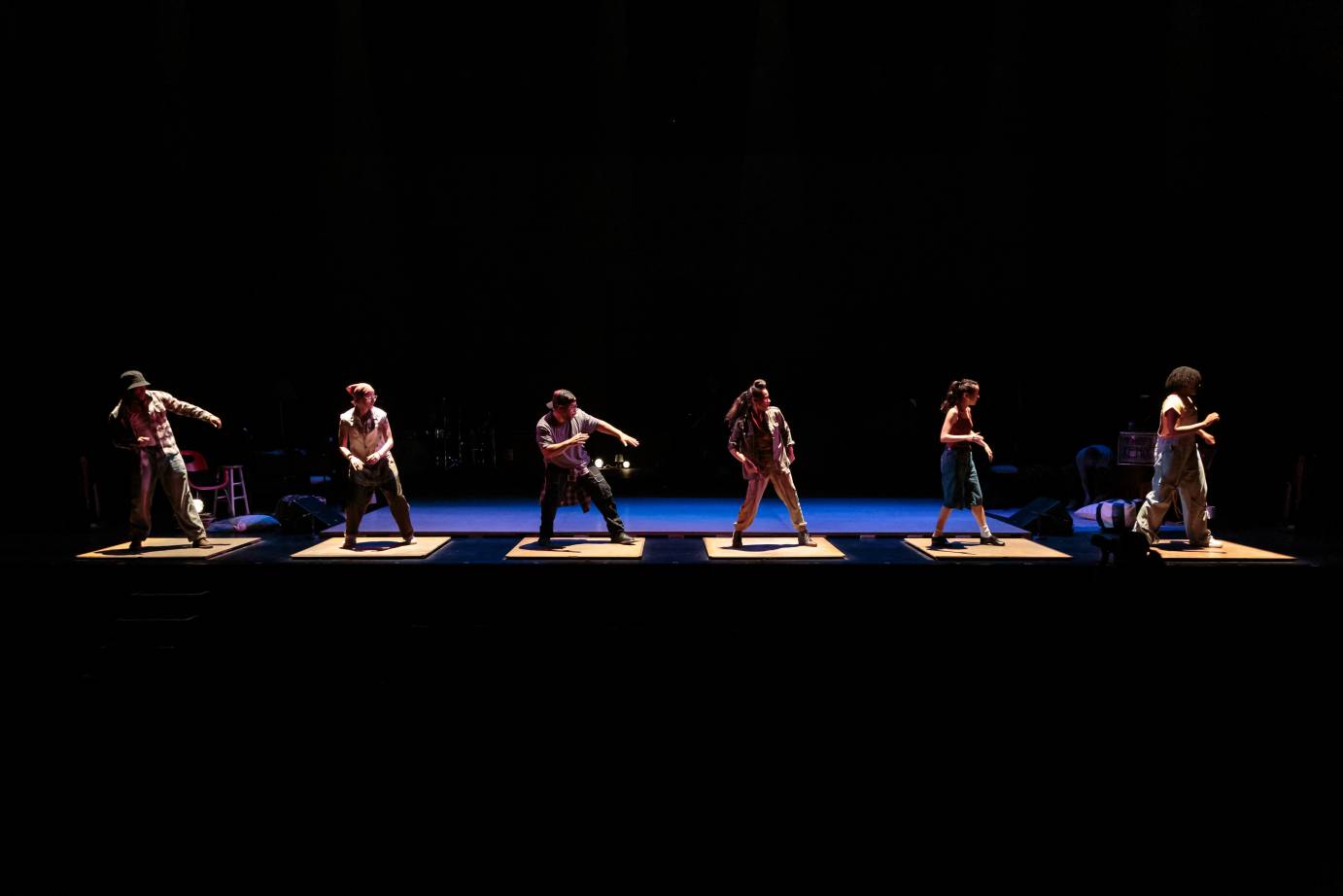
As the show’s opening scene, “Q-Tap” (2025), develops into a pure movement sequence that welcomes additional performers, we see how tap, though a solo-driven art, is also communally fueled. As Julie Ballard’s lighting design (enhancing throughout the evening) begins to illuminate six separate 4’ x 4’ tap boards positioned across the apron of the stage, and individual soloists step up to tap deftly upon them, Casel’s elegant approach to rhythm tap is amplified as well as contextualized. Becoming aware of its birth amid a community of dancers merging hip-hop and tap, we now notice the comfy “living-room” areas – furnished with floor cushions, couch, and old-fashioned TV — where Casel’s fellow performers have been hanging out, on the sides of the dance floor.
A tribal sensibility emerges, yet is soon interrupted by Ryan K. Johnson’s captivating self-choreographed body-percussion solo. Both idiosyncratic and invigorating, it spurs Casel, followed by others, to out-do what they just saw by both borrowing from and topping it, in a thrilling “battle” sequence. The spirit of challenge that drives the inventiveness of solo hip-hop tappers is no different than that which pervaded the improvisatory jams of the legendary dancers at Harlem’s Hoofers Club back in the day. It makes one wonder, in the tap world, is there any difference between competition and conversation? Is challenging the individual what builds the community?
Continuing to underline the notion of tappers as both dance and musical artists, John Manzari ushers in an entertaining segment that reminds us of theatrical tap’s rich bonds with jazz music. Accompanied only by Keisel Jiménez’s spare drum sounds, in “Push/Pull” (2022) the golden-voiced Manzari delivers a gorgeous rendition of Cole Porter’s “Begin the Beguine,” to which Jared Alexander, Naomi Funaki, and Funmi Sofola dance Casel’s stylishly-understated choreography, a leisurely trio built of sly variations on pedestrian walking steps.
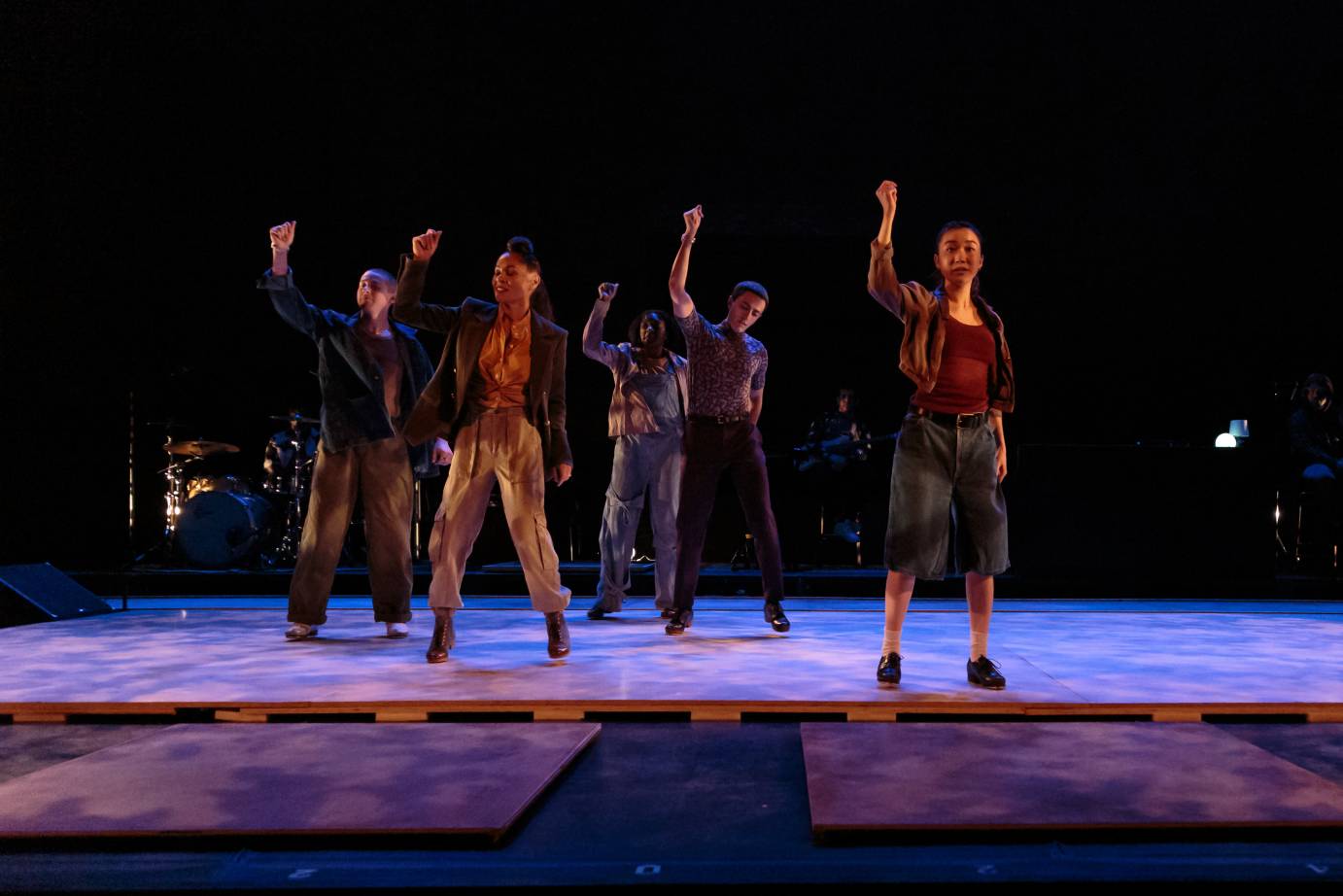
Woven into the silky progression of Casel and Beard’s tightly-knit show are appearances by Tony McPherson, a brainy poet who accompanies his recitations with intricate, virtually non-stop, often locking-style street-dance movements. His magnetic presence and astutely rhythmic performances make for enthralling transitions in and out of ensemble dance pieces.
As the spotlight shifts to Quynn L. Johnson performing a self-choreographed solo along a narrow pathway of sand, we start to see tap as a gigantic umbrella. Not only does the art from encompass many different styles, but one of those styles, specialty dances — of the ilk popularized by Hollywood and nightclub acts during the middle decades of the 20th century — is actually a category that can include many novel ways of dancing. A unique specialty, sand dancing never fails to intrigue me and, here, as the solo expands into a group routine, and a row of dancers pours more sand onto the floor and moves within it, I discovered how snug their scratchy sounds can make one feel. Keenly-choreographed by Quynn L. Johnson, the sequence is also visually striking. Angular movements of the arms and torso contrast the circular moves of feet drawing arcs in the sand. Most memorable is the moment when the dancers all face forward, lean their weight back on their heels, and swipe the balls of their feet side-to-side like windshield wipers. The kinesthetic simplicity, the rawness of the resulting sound, and the ordinariness of the evoked image prove delightful.
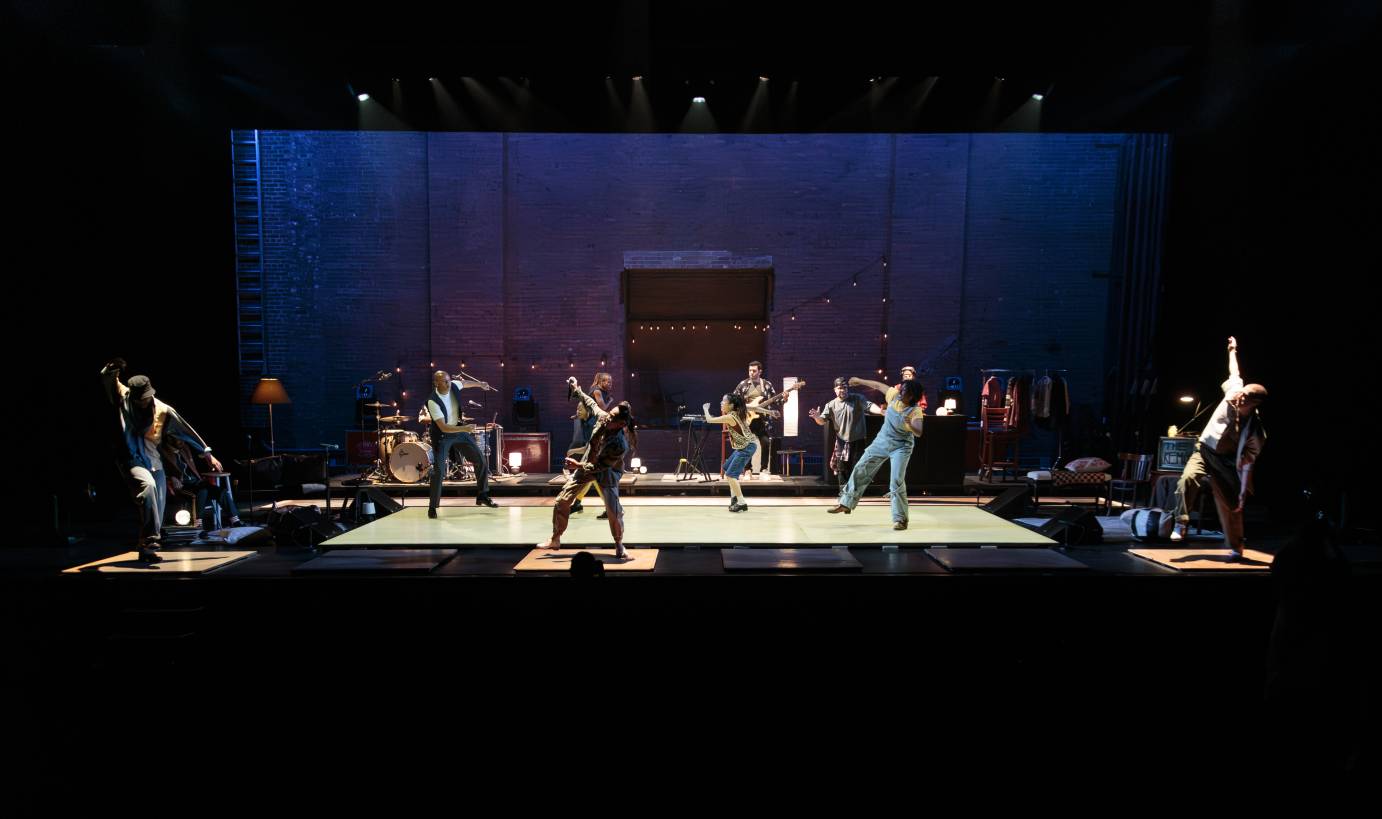
Choreographed by Caleb Teicher and Funaki, and danced by Funaki and Casel, “Little Things” displays yet another specialty, soft-shoe, and, oh boy, was it soft! Funaki’s feet make the tiniest of sounds, like Q-tips tapping on felt. And, aptly, when Casel decides to join in the dance, she very carefully tip-toes herself into position alongside Funaki. The quiet, gently affectionate mood they conjure reveals tap as an art form with expressive capabilities that extend far beyond flash and fury.
On a completely different note, Ryan K. Johnson’s “Po’Boy,” a rousing ensemble number, organically migrates from a folksy, rural feel into hard-driving, urban sensibilities, suggesting the broader South-to-North migration of African-Americans. This notion of tap dance as a vital reflection of the African-American experience is further reinforced by the affecting group piece “Unmuted” (2017), danced to an inspiring rendition of the Black national anthem, “Lift Every Voice and Sing.”
But it’s the show’s charming 11 o’clock number, “Audrey” (2005), Casel’s tribute to tap greats Honi Coles and Cholly Atkins, that highlights my favorite defining feature of tap dance: more so than any other dance community, tappers harbor a respect for knowing and handing down the history and traditions of their elders. To top off her evening, Casel brings Teicher onto the stage. A magnetic performer, Teicher is on their way to becoming as prominent a tap artist of their generation as Casel is of hers, and together with the rest of the cast, the two perform “Audrey,” a dance Casel taught to Teicher when Teicher was just a child, 20 years ago.
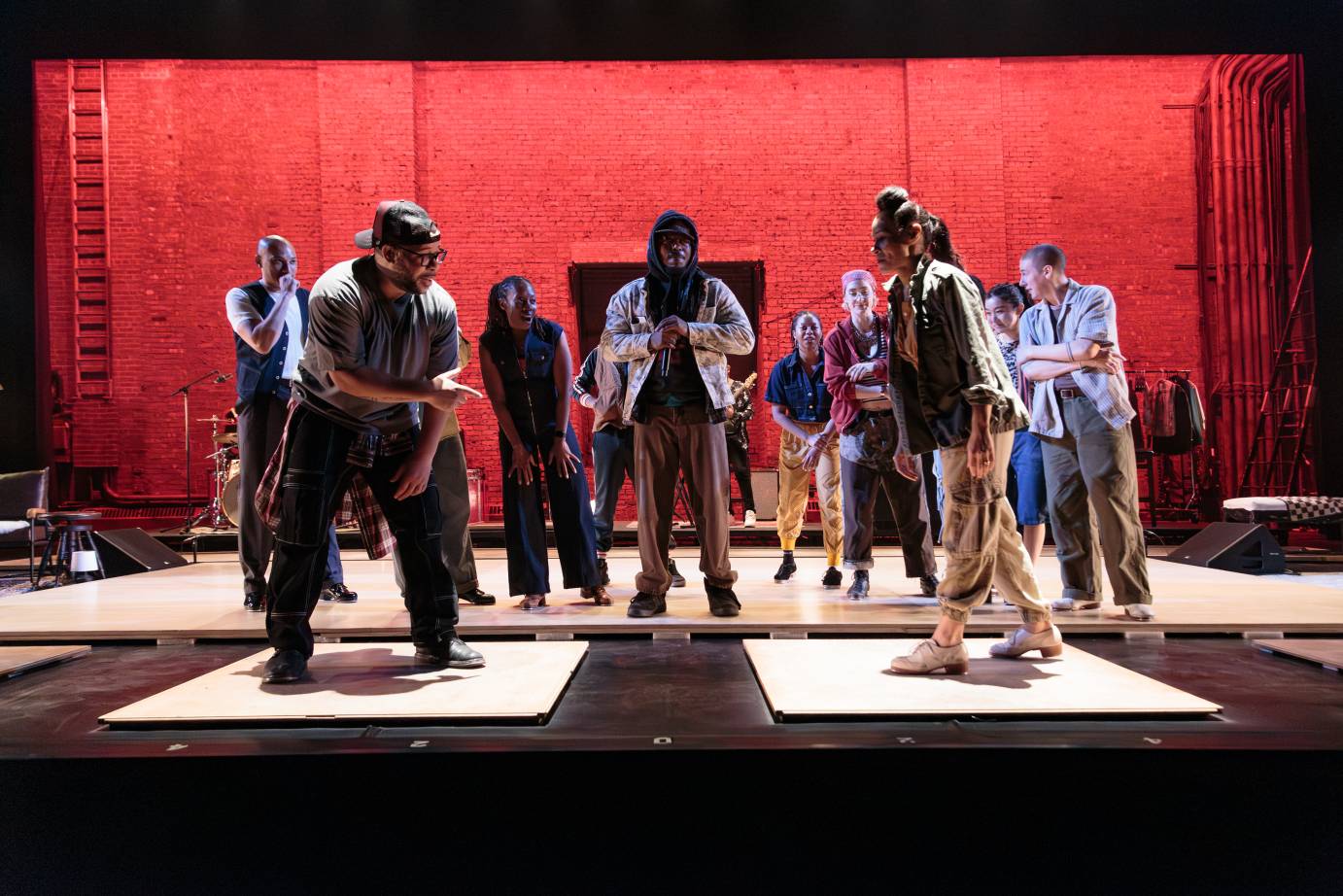
We are left, however, with “Speak Your Name” (2021), an energetic group finale that showcases Casel’s distinctive way of tapping to contemporary music. The footwork is fast, unpredictably accented, and ornamented with larger leg movements — she likes to reach one leg out and brush the floor with the inside of her foot. Not heavy, fierce, or aggressive, there’s a light brilliance to the dancing. The stamping moves don’t pound, but often reverberate as loudly as they do only because they are mirrored by drum sounds. Though the choreography is of Casel’s own movement fashion, it’s a blast to see how exciting it all gets when the whole cast tries it on, absorbs what they will of it, and mixes and matches it with their own tap-movement ideas.




